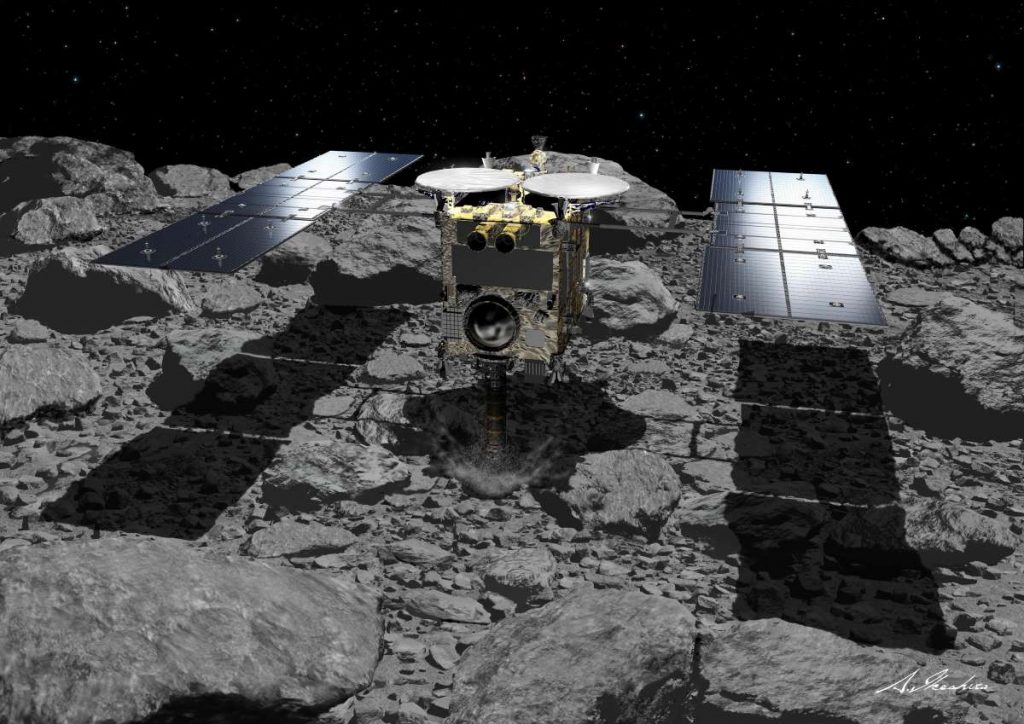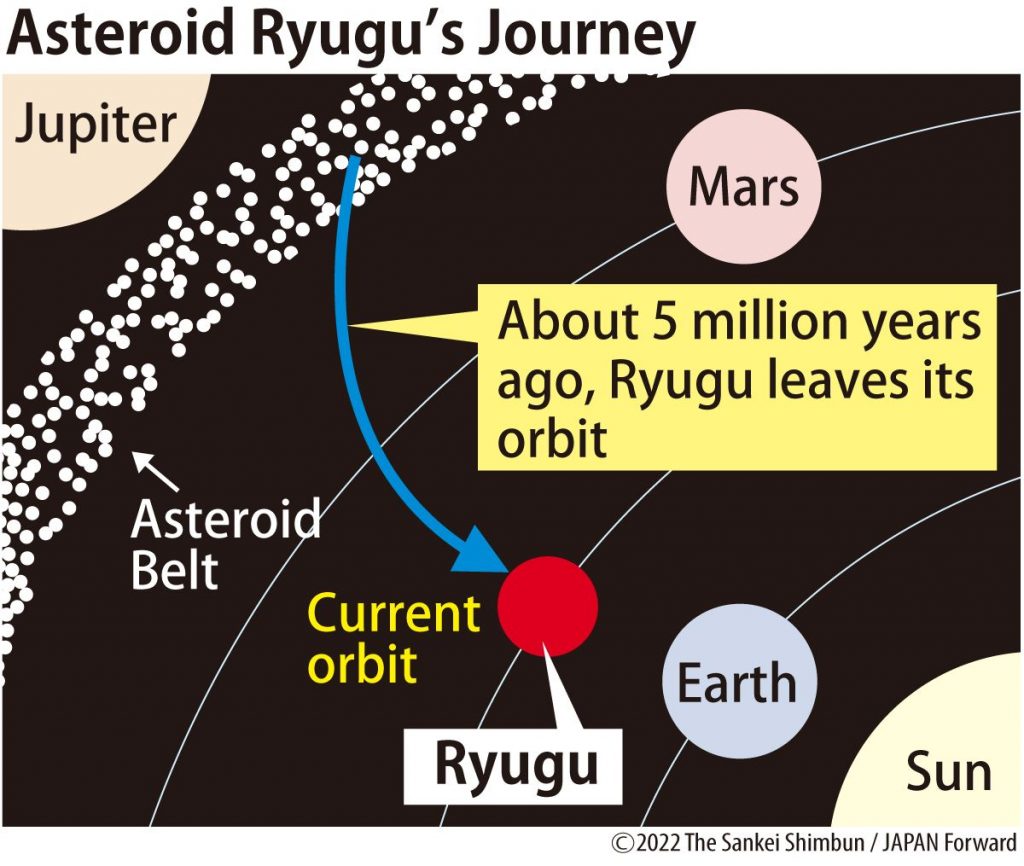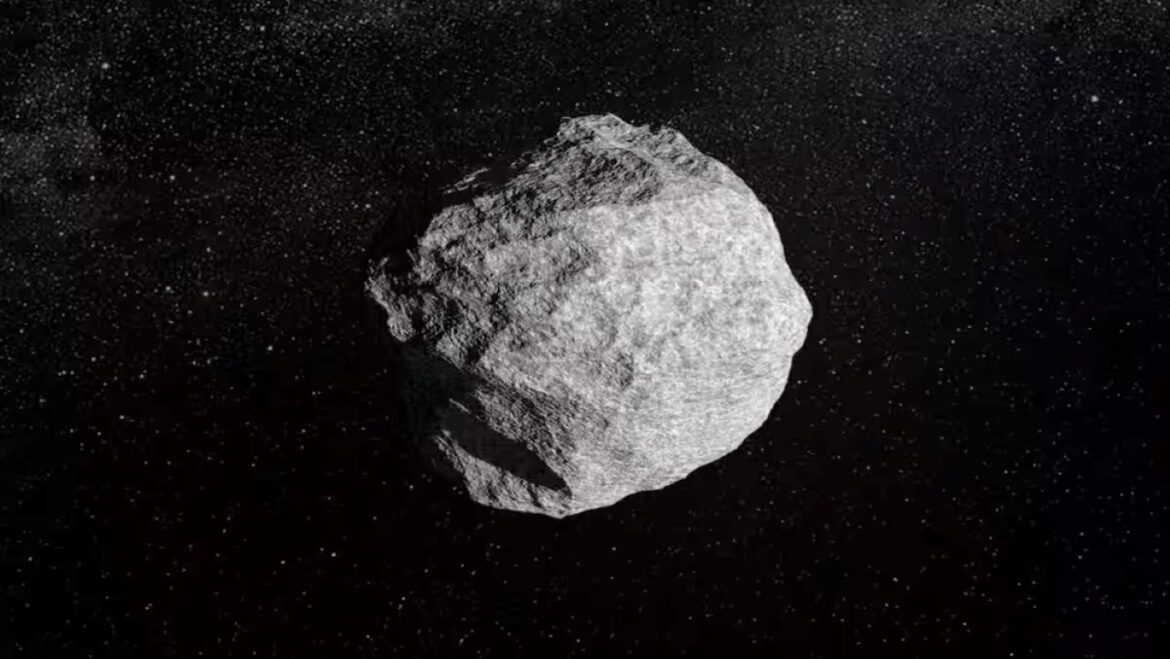このページを
日本語
で読む
Momentum is growing for building “Earth defenses” to prevent a meteoroid from colliding with the Earth and causing a major disaster. The public needs to see the groundwork discussions regarding international cooperation in this area. It is important to advance preparations for building such defenses.
Meteoroid collisions are extremely rare events. However, they have occurred in Russia and other places in the past. Moreover, if a city were to be hit directly, the damage would be immeasurable.
Anxiety rose in January 2025 when it was learned there was a 1.3% probability that a meteorite several tens of meters in diameter might collide with the Earth in 2032. Subsequent observations have shown that no collision will occur. Nevertheless, the risk of a previously undetected meteoroid colliding with the Earth sometime in the future cannot be ruled out.
 An image of Hayabusa2 landing on Ryugu, where it picked up soil samples and brought them to Earth (provided by JAXA, Akihiro Ikeshita.)
An image of Hayabusa2 landing on Ryugu, where it picked up soil samples and brought them to Earth (provided by JAXA, Akihiro Ikeshita.)
No Longer Science Fiction
In the past, defense of the Earth was something only considered in science fiction movies. Nevertheless, now it is starting to become a reality. Three years ago, the United States’ National Aeronautics and Space Administration successfully conducted the first space experiment to alter the trajectory of a meteorite by slamming a probe into it. In doing so, it showed that it is technically possible to avoid a collision with a would-be intruder from space.
Changing the trajectory of a meteorite would, however, require the launch of multiple probes, making international cooperation essential. A United Nations organization made up of space agencies from the US, the European Union, Japan, and other countries is considering various options. However, no concrete structure has been established yet to decide specifics. For example, which countries would launch the probes, and how the costs of the program would be covered.
Rules for international cooperation and decision-making should be established before a threat materializes. That way, a response can be launched immediately if an actual crisis approaches.
Japan’s Hayabusa Success
Japan has a proven track record with the Hayabusa probe to a near-earth asteroid launched in 2003 and its successors. Undoubtedly, it boasts the world’s best technology for asteroid exploration. It is entirely possible that this know-how can be further developed into the technology needed to change the trajectories of meteoroids. This is how Japan can best participate in the defense of Earth.

Japan’s technology is quite significant in terms of contributing to security for humanity. Hopefully, Japan will promote further technological development with the aim of realizing this goal.
The technological ability to change meteorite trajectories is still not sufficiently developed. Also, there are many unresolved legal issues, such as who would be responsible if, after intervention, the meteorite fell on and caused damage within a country that would not otherwise have been affected.
Size and time also matter. For example, if the time to avoid a collision is short and a meteorite is over one kilometer, or even several hundred meters in diameter, the only option might be to change its trajectory with the force provided by a nuclear explosion.
Nonetheless, nuclear explosions in outer space are currently prohibited by the Outer Space Treaty and the Partial Nuclear-Test-Ban Treaty. Therefore, international discussions are needed on how to respond in such a case.
Unlike earthquakes, meteorite disasters are not a cause for daily concern. Still, they pose a potentially serious threat. If a collision can be avoided, that would be a historic achievement. The entire world must work together to confront this challenge from outer space.
 Hayabusa2 landed on Asteroid Ryugu to pick up soil samples. Here is a depiction of the celestial body’s Journey
Hayabusa2 landed on Asteroid Ryugu to pick up soil samples. Here is a depiction of the celestial body’s Journey
 RELATED:
RELATED:
Author: Editorial Board, The Sankei Shimbun
このページを
日本語
で読む
Continue Reading


AloJapan.com